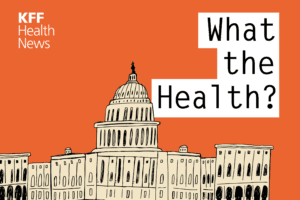Bridging the Provider Gap – Psychiatric Times

The mental health provider shortage could not be happening at a worse time. It was already a problem that has been decades in the making, but the COVID-19 pandemic has sent everything into overdrive.
In 2020, 38% of adults in the United States reported symptoms of anxiety or depression, up from just 11% in 2019.1 Emergency departments have seen more individuals seek treatment for suicide attempts, drug overdoses, domestic violence, and child abuse and neglect.2
The demand for mental health care may be rising, but the supply of providers has been lagging for years. Back in 2013, a deficit of more than 6000 psychiatrists was projected for 2025, representing 12% of the workforce.3 Today, that estimate has been pushed to more than 7500.4 And it is not just happening in the mental health field: More than 15,000 primary care and 11,000 dental health providers are needed to bridge care gaps in their specialties.4
For mental health providers, there are more reasons for the shortage than solutions. Certainly, increased awareness and better screening have boosted people’s confidence to seek treatment. There are internal reasons: recruitment challenges, an aging workforce, and provider burnout. There are also external forces: a biased insurance reimbursement system and lingering stigma around psychiatry and mental health.
Solving the provider shortage is no easy task. But without real solutions, the ones who lose out are the patients we serve, especially those who are minorities, live in rural areas, or come from low-income areas. In providing solutions, psychiatry needs to be a leader in making bold decisions, leveling the playing field, and shaping the future of mental health.
Provider Shortages by the Numbers
We know that our patients are differentially impacted by this shortage. While one-third of all Americans lack adequate access to mental health care, this tends to be much higher in rural and partially rural areas of the country.5 In Wyoming and Utah, for example, 96.4% and 83.3% of the population live in provider shortage areas, respectively, compared to 0.4% in New Jersey and 4% in Massachusetts.5
Part of the problem with provider coverage is that psychiatrists in the United States tend to congregate in the northeast and along the west coast. Delaware, for example, needs only 15 mental health providers to cover its gap in care, while Texas needs 638.5
A patient’s choice of psychiatrist is highly personal—maybe more so than other types of physicians. For example, women with histories of sexual trauma often prefer to meet with female psychiatrists. The severity of shortages in many areas of the country prevents patients from exercising their ability to choose the right provider for them, directly impacting their care experience.
Patients are also challenged by long wait times for treatment. Those who do get an outpatient appointment often have to wait several months. During this wait, many are lost to treatment or resort to seeking care in emergency rooms. In 2016, 1 in 5 adults reported that they were suffering from mental illness, yet less than 50% of them received treatment.6 In 2017, the average wait time to receive emergency psychiatric care was 23 hours.3
Psychiatrists also face challenges from the shortage, including pressure to fit more patients into their tight clinic schedules. Many psychiatrists find their appointments becoming shorter to accommodate more patients. But this only prevents in-depth clinical assessment, collaboration with treatment team members, and consultation with primary care providers we rely on.
With shorter appointments, there is a greater chance of overprescribing antipsychotics and other medications. It takes a great deal more time to educate patients about the need to subtract medications than it does to add new ones. Additionally, the length between prescription refills may be extended beyond a provider’s ability to monitor responses and side effects.
Stretched too thin, these scenarios set the stage for provider burnout. Physicians in general have high rates of burnout, with 45.8% of physicians reporting at least 1 symptom.7 Psychiatrists experience a unique kind of stress, as they “use themselves as tools” to treat patients. This can be exacerbated by long hours, managing suicidal or homicidal patients, and poor work-life balance.8 Unmanaged, this stress can drive psychiatrists to feel the need to rescue patients, to feel like failures if treatment is not effective, to feel powerless against illness, or to fear becoming ill themselves.
Psychiatry is a challenging profession that still suffers from stigma. It is often viewed negatively by other medical professionals and seen as remote from other forms of medicine—an unscientific specialty lacking in glamour or prestige. That many medical students’ exposure to psychiatry is limited to emergency medicine and inpatient psychiatric hospitals further exacerbates this stigma. It is a view that continues to challenge recruitment efforts during medical school.
After World War II, 7% to 10% of medical students chose psychiatry as their specialty.9 But the closures of state-run psychiatric hospitals and the sidelining of care for the seriously mentally ill took a toll. By the 1970s, this rate fell by half and has fluctuated between 3% and 5.5% ever since.9
Upon matriculation, only about 1.6% of medical students choose psychiatry as their specialty.9 By the time they graduate, however, this grows to about 4.1%.9 Put another way, close to 80% of future psychiatrists did not go into medical school seeking that specialty. Somewhere along the way, however, they were inspired to make this their life’s work, underscoring the importance of reaching students during medical school.
Encouragingly, we do see these numbers improving. Ten years ago, only about 4% of medical students chose to specialize in psychiatry. In 2020, however, that rose to 6.5%, an increase greater than all other medical specialties.10 Part of this is likely due to a growing awareness that physical and mental health have a symbiotic relationship. It may also be due to a rising interest in neuroscience. While the number of practicing psychiatrists declined by 10% between 2003 and 2013, neurologists increased by more than 15%.10
Students are often pulled to psychiatry for deeply personal reasons. Perhaps they witnessed a family member suffer from mental illness. Perhaps their interest was piqued by a previous degree in psychology, an inspiring teacher, or an exceptional clinical placement. While it is reassuring to see medical students have that “lightbulb” moment, there is an opportunity to encourage more students to enter medical school because of the power of psychiatry.
We also know that earning potential is a powerful motivator for medical students, but psychiatry simply does not pay as much as other specialties. Psychiatrists make an average of $275,000 a year, compared to plastic surgeons at the high end of the spectrum earning $526,000 and pediatricians on the low end earning $221,000.11 Reasons for this vary, but if you follow the money, it inevitably leads to insurance companies and how they reimburse psychiatric and other mental health services.
Insurance’s Trickledown Effect
Insurance has long dragged its feet on adequately covering mental health care. Patients are 3 to 6 times more likely to receive out-of-network mental health care providers and facilities than other medical and surgical services.6 Reimbursement policies for health insurance companies can be so daunting that 40% of psychiatrists in 2017 operated cash-only private practices, second only to dermatologists.3
Historically, insurance companies tend to favor physical health care needs over mental health. Although it is unthinkable for anyone to suffer long from a broken ankle, individuals with serious mental illnesses often have to wait months for treatment. Insurance companies work additional legal loopholes by requiring patients to meet a high bar of criteria to qualify for treatment. Often, this means only patients who are very ill qualify for care coverage.12
There are additional disparities in how payors reimburse medical services. In 2014, for example, an in-network office reimbursement was $66 for a psychiatrist, compared to $76 for other medical office visits.6 Because of this gap, providers may forego participating in an insurance network because they can charge more out-of-network.
While federal and state parity laws seek to balance coverage, insurance companies often skirt this requirement by shrinking provider networks. As a result, patients wait longer to receive treatment and have fewer options when selecting a provider. Those who do have in-network options often have to wade through outdated insurance databases or “ghost networks” filled with providers who do not even take insurance, had disconnected numbers, or had died.13
As a result, many patients either give up on seeking treatment or pay a higher cost to see out-of-network providers. Additionally, the gap has widened between what insurers will cover for in-network psychotherapy and out-of-network costs for these services. This widening gap, which also includes patient cost-sharing, can be partially attributed to the provider shortage.
A number of laws have worked to close the gaps in coverage. Passed in 2008, the Mental Health Parity and Addiction Equity Act (MHPAEA) required insurance companies to reimburse mental health conditions in a manner similar to other medical conditions. This law sought to patch previous legislation that allowed limits on facilities and treatment visits as well as higher copays for outpatient mental health visits. The law also expanded coverage to include substance abuse treatment.
The Affordable Care Act of 2010 went a step further by requiring all insurance plans to provide coverage for mental health and substance use treatment, listing these among 10 essential health benefits. In December 2020, Congress enacted new provisions requiring payors to provide comparative analyses showing its compliance with MHPAEA.
Some states are passing separate legislation designed to provide further protection for consumers. In 2021, California joined 6 other states including Texas, Maryland, and Colorado in requiring insurance companies to reduce wait times to see a mental health provider to just 10 days. Insurance companies have pushed back. They blame the provider shortage for longer wait times and say it is unfair to put the onus on insurance companies to solve it.
Resolving the Provider Shortage
Addressing psychiatry’s provider shortage requires a multifaceted approach that involves multiple stakeholders that include providers, trade associations, patient advocates, insurers, and federal and state governments.3
Recruitment and workforce development: Prioritizing recruitment; mentoring; and longer, hands-on training residencies is vital in giving students ample opportunity to explore psychiatry. Expanding these opportunities into rural areas may also encourage students to remain in these areas after graduation. Additional training and recruitment of nurse practitioners, clinical pharmacists, and physician assistants can also provide a foundation of support to provide greater care for patients.
Telehealth: Telehealth holds enormous potential for giving access to hard-to-reach patients, especially those living in rural areas. During the pandemic, federal and state governments eased hundreds of restrictions to allow patients access to telehealth care via video-conferencing services.14 However, these are temporary measures. Because each state differs in how it legislates and regulates the practice of medicine and telehealth, there are limits to how far these services can extend. Suggestions on how to strike a healthy compromise include making it easier for providers to obtain out-of-state licenses, allowing states to recognize licenses from other states, and allowing clinicians to apply for a national license along with their state license.15
Collaborative care model exploration: It is becoming increasingly clear that mental health and physical health are linked. Through a collaborative care model, psychiatrists serve as team leaders in a primary care setting where the holistic needs of patients are taken into account and treated collectively. This is especially effective with patients who are suffering from cooccurring medical and behavioral health conditions.
Stigma reduction: Eventually, psychiatry’s success lies in its ability to partner with other medical specialties. We need to capitalize on the growing understanding that, ultimately, mental health is physical health. By working to blend behavioral health and psychiatry into primary care, we can forge a powerful partnership and nurture this symbiotic relationship.
Insurance reimbursement system improvement: The fact that 40% of psychiatrists do not accept insurance highlights the growing gap between the cost of services and reimbursement amounts.3 This requires diligence on the part of providers to continue to negotiate fair market rates. Innovative prospective payment systems can be used as a more reliable cost-based methodology to set rates. This can be useful when Medicare is involved, as it can protect practices from limiting access to psychiatric services to avoid a net loss.
Regulatory barriers and opportunities: While federal regulations guide the big picture, there is room to improve legislative consistency across the states. For example, HIPAA regards patient confidentiality regulations equally among psychiatry and general medicine. But states can apply their own, more restrictive measures to create a firewall and limit collaboration between behavioral health and primary care providers.
Concluding Thoughts
Solving the provider shortage is not easy, as it requires action on a number of fronts. The COVID-19 pandemic particularly highlights these shortfalls and promises to make a big problem potentially worse. It is a problem that starts in medical school, progresses through stigma and insurance barriers, and ends with progressively older providers retiring without replacement. We must continue to broaden access to providers through telehealth and other means while recognizing they can only see a finite number of patients.
By demanding that reimbursements adequately cover the cost of services, promoting the importance of mental health, and partnering with primary care providers, we can spread our reach and encourage collaboration to reach and affect total wellness within patients.
Dr Netherton is a psychiatrist and regional medical director with Mindpath Health.
References
1. Barna M. Mental health workforce taxed during COVID-19 pandemic: worker shortage hinders access. The Nation’s Health. January 2022. Accessed March 17, 2022. https://www.thenationshealth.org/content/51/10/1.3
2. Holland KM, Jones C, Vivolo-Kantor AM. Trends in US emergency department visits for mental health, overdose, and violence outcomes before and during the COVID-19 pandemic. JAMA Psychiatry. 2021;78(4):372-379.
3. The National Council for Behavioral Health’s Medical Director Institute. Medical directors’ report recommends training more psychiatrists and expanding telepsychiatry. March 28, 2017. Accessed March 17, 2022. https://www.thenationalcouncil.org/about/national-council/medical-director-institute/access-paper-release-final-3-28-17-final/
4. Shortage areas. Health Resources and Services Administration. Accessed March 17, 2022. https://data.hrsa.gov/topics/health-workforce/shortage-areas
5. Over one-third of Americans live in areas lacking mental health professionals. USA Facts. June 9, 2021. Accessed March 17, 2022. https://usafacts.org/articles/over-one-third-of-americans-live-in-areas-lacking-mental-health-professionals/
6. Benson NM, Song Z. Prices and cost sharing for psychotherapy in network versus out of network in the United States. Health Aff (Millwood). 2020;39(7):1210-1218.
7. Shanafelt TD, Boone S, Tan L, et al. Burnout and satisfaction with work-life balance among US physicians relative to the general US population. Arch Intern Med. 2012;172(18):1377-1385.
8. Kumar S. Burnout in psychiatrists. World Psychiatry. 2007;6(3):186-189.
9. Goldenberg MN, Williams K, Spollen JJ. Stability of and factors related to medical student specialty choice of psychiatry. Am J Psychiatry. 2017;174(9):859-866.
10. Moran M. Psychiatry residency match numbers climb again after unprecedented year in medical education. Psychiatric News. April 21, 2021. Accessed March 17, 2022. https://psychnews.psychiatryonline.org/doi/full/10.1176/appi.pn.2021.5.27
11. Wilcox L. Physician salary report 2021: Compensation steady despite COVID-19. Weatherby Healthcare. May 26, 2021. Accessed March 17, 2022. https://weatherbyhealthcare.com/blog/annual-physician-salary-report
12. Bogusz GB. Health insurers still don’t adequately cover mental health treatment. National Alliance on Mental Health. March 13, 2020. Accessed March 17, 2022. https://www.nami.org/Blogs/NAMI-Blog/March-2020/Health-Insurers-Still-Don-t-Adequately-Cover-Mental-Health-Treatment
13. Ellison K. 73 doctors and none available: how ghost networks hamper mental care. The Washington Post. February 19, 2022. Accesssed March 17, 2022. https://www.washingtonpost.com/health/2022/02/19/mental-health-ghost-network/
14. Telehealth licensing requirements and interstate compacts. Accessed March 17, 2022. https://telehealth.hhs.gov/providers/policy-changes-during-the-covid-19-public-health-emergency/telehealth-licensing-requirements-and-interstate-compacts/
15. Mehrotra A, Nimgaonkar A, Richman B. Telemedicine and medical licensure — potential paths for reform. N Engl J Med. 2021;384(8):687-690.




